Apps for Smart Groundwater Monitoring and Assessments: A Case Study of Regideso Catchment in Kimbanseke
Abstract
:Featured Application
Abstract
1. Introduction
2. Materials and Methods
2.1. Overview of the Adapted Mixed Method Approach
2.2. Study Area
2.3. Conceptual Framework
2.4. Data Collection
2.5. Software Used
2.6. Spatial Analysis Approach Aspect of the Study
2.6.1. Land Use and Land Cover
2.6.2. Pumping Scenario
2.7. Software Solution Choice
2.8. Steps Taken in the Development of the Groundwater Monitoring App Development
2.8.1. Creation of a New App
- ➢
- The begin button was clicked for using ArcGIS AppStudio.
- ➢
- In the toolbar, select New App was chosen.
- ➢
- Selection from Starter/the category list was made.
- ➢
- OK button was clicked.
2.8.2. Testing App on Major Devices
- ➢
- In the gallery, the new app was situated there.
- ➢
- The app was uploaded to ArcGIS by clicking Upload on the side panel.
- ➢
- AppStudio Player was installed on a mobile phone.
- ➢
- ArcGIS was accessed using AppStudio Player.
- ➢
- The app was installed and run on the mobile/smart phone.
2.9. Licensing App
3. Results and Discussion
3.1. Systems Based on Mobile Architecture Used for Monitoring and Manage Municipal Waters
- Borehole data (groundwater levels and chemistry) were erratic and rarely provided a time series.
- No geological or geophysical borehole log data were found, and the vertical extent of aquifers, non-aquifers and their hydraulic properties were not defined.
- A negative trend regarding rising water levels over time was discovered.
- Near fresh water, brackish groundwater was discovered.
- Inconsistencies existed in the existing data (e.g., the same data had been measured at different times and locations, appeared in more than one borehole., meaning the data was duplicated).
3.2. Land Use and Land Cover
3.3. Processes That Influence Groundwater Movement and Storage
3.3.2. Stratigraphy Diagram
3.3.3. Lithology Diagram
3.4. Various Pumping Scenarios from the Well Field/Boreholes Assessment
3.4.1. Borehole’s Assessment from Baseline Information
3.4.2. Borehole’s Assessment Scenario 1
3.4.3. Borehole’s Assessment Scenario 2
3.4.4. Borehole’s Assessment Scenario 3
3.5. Groundwater Flow Direction Map
3.6. Implementation of the App
4. Conclusions and Recommendations
Author Contributions
Funding
Data Availability Statement
Acknowledgments
Conflicts of Interest
Appendix A
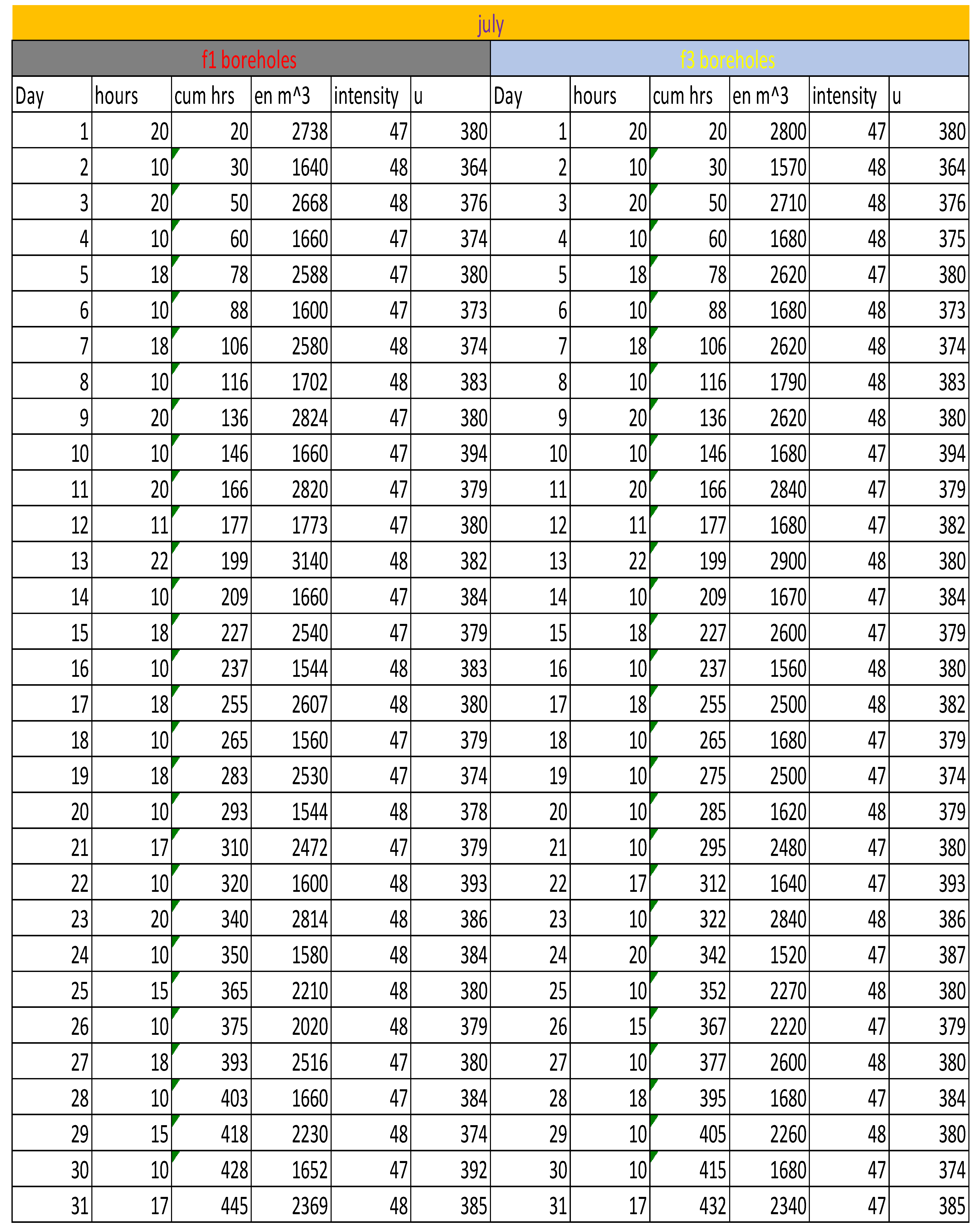
Appendix B

Appendix C
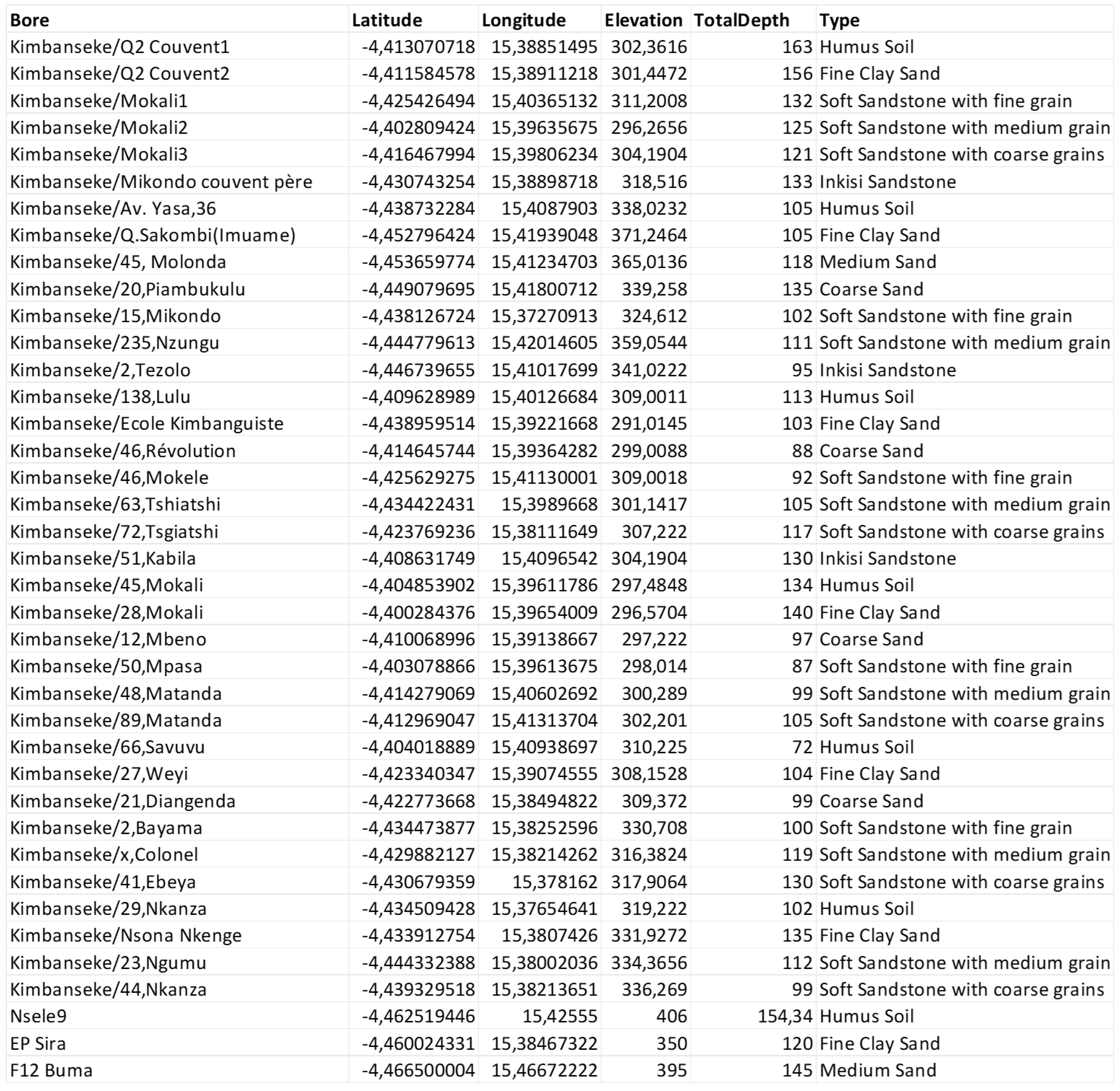
References
- Xiaolan, T.; Adesina, J.A. Integrated Watershed Management Framework and Groundwater Resources in Africa—A Review of West Africa Sub-region. Water 2022, 14, 288. [Google Scholar]
- Clement, T.; Johnson, C.D.; Sun, Y.; Klecka, G.M.; Bartlett, C. Natural attenuation of chlorinated ethene compounds: Model development and field-scale application at the Dover site. J. Contam. Hydrol. 2000, 42, 113–140. [Google Scholar] [CrossRef]
- Malembaka, E.B. Measuring and Understanding Individual and Community Health Status in Eastern Democratic Republic of Congo from a Person-Centered Perspective. Doctoral Dissertation, Université Catholique de Louvain, Ottignies-Louvain-la-Neuve, Belgium, 2021. [Google Scholar]
- Kasargod, C.; Barker, B.; Bayles, M.; Porter, G.F. Catch Me if You Can! Heart Lung Circ. 2016, 25, S24–S25. [Google Scholar] [CrossRef] [Green Version]
- Swatuk, L.A. Water for agriculture. In Handbook of Critical Agrarian Studies; Edward Elgar Publishing: Cheltenham, UK, 2021. [Google Scholar]
- Zhou, Z.; Cartwright, I. Using geochemistry to identify and quantify the sources, distribution, and fluxes of baseflow to an intermittent river impacted by climate change: The upper Wimmera River, southeast Australia. Sci. Total Environ. 2021, 801, 149725. [Google Scholar] [CrossRef]
- Pramita, A.W.; Syafrudin, S.; Sugianto, D.N. Effect of seawater intrusion on groundwater in the Demak coastal area Indonesia: A review. IOP Conf. Ser. Earth Environ. Sci. 2021, 896, 012070. [Google Scholar] [CrossRef]
- De Fraiture, C.; Wichelns, D. Satisfying future water demands for agriculture. Agric. Water Manag. 2010, 97, 502–511. [Google Scholar] [CrossRef]
- Lam, Q.; Meon, G.; Pätsch, M. Coupled modelling approach to assess effects of climate change on a coastal groundwater system. Groundw. Sustain. Dev. 2021, 14, 100633. [Google Scholar] [CrossRef]
- Jarvis, T.; Wiley, J. Collective Aquifer Governance: Dispute Prevention for Groundwater and Aquifers through Unitization; Cambridge University Press: Cambridge, UK, 2022. [Google Scholar]
- Cao, T.; Han, D.; Song, X. Past, present, and future of global seawater intrusion research: A bibliometric analysis. J. Hydrol. 2021, 603, 126844. [Google Scholar] [CrossRef]
- Yang, J.; Liu, K.; Wang, Z.; Du, Y.; Zhang, J. Water-Saving and High-Yielding Irrigation for Lowland Rice by Controlling Limiting Values of Soil Water Potential. J. Integr. Plant Biol. 2007, 49, 1445–1454. [Google Scholar] [CrossRef]
- Cripps, C.; Kehinde, M.; Lewis, M.; Garcia-Bajo, M.; Panteleit, B.; Seiter, K. Application Theme 4–Regulatory Support. In Applied Multidimensional Geological Modeling: Informing Sustainable Human Interactions with the Shallow Subsurface; Wiley: Hoboken, NJ, USA, 2021; pp. 501–517. [Google Scholar]
- MacDonald, A.M.; Bonsor, H.C.; Dochartaigh, B.É.Ó.; Taylor, R.G. Quantitative Maps of Groundwater Resources in Africa. Environ. Res. Lett. 2012, 7, 024009. [Google Scholar] [CrossRef]
- Mohan, S.; Kuipally, N. Groundwater and Conjunctive Use Management. In Handbook of Water Resources Management: Discourses, Concepts and Examples; Springer: Cham, Switzerland, 2021; pp. 735–775. [Google Scholar]
- Bagheri-Gavkosh, M.; Hosseini, S.M.; Ataie-Ashtiani, B.; Sohani, Y.; Ebrahimian, H.; Morovat, F.; Ashrafi, S. Land subsidence: A global challenge. Sci. Total Environ. 2021, 778, 146193. [Google Scholar] [CrossRef] [PubMed]
- Oke, S.A.; Alowo, R.; Masinde, M. Using Internet of Things for sustainable groundwater drought management in the Modder River catchment of South Africa. In Proceedings of the 2019 Open Innovations (OI), Cape Town, South Africa, 2–4 October 2019; pp. 63–70. [Google Scholar] [CrossRef]
- Van Ginkel, M.; Biradar, C. Drought Early Warning in Agri-Food Systems. Climate 2021, 9, 134. [Google Scholar] [CrossRef]
- Bavaresco, M.V.; Ghisi, E.; D’Oca, S.; Pisello, A.L. Triggering occupant behaviour for energy sustainability: Exploring subjective and comfort-related drivers in Brazilian offices. Energy Res. Soc. Sci. 2021, 74, 101959. [Google Scholar] [CrossRef]
- Smith, L.; Ibn-Mohammed, T.; Reaney, I.M.; Koh, S.C.L. A Chemical Element Sustainability Index. Resour. Conserv. Recycl. 2020, 166, 105317. [Google Scholar] [CrossRef]
- Masinde, E.M. ITIKI: Bridge between African Indigenous Knowledge and Modern Science on Drought Prediction. Doctoral Dissertation, University of Cape Town, Cape Town, South Africa, 2012. [Google Scholar]
- Masinde, M.; Mwagha, M.; Tadesse, T. Downscaling Africa’s Drought Forecasts through Integration of Indigenous and Scientific Drought Forecasts Using Fuzzy Cognitive Maps. Geosciences 2018, 8, 135. [Google Scholar] [CrossRef] [Green Version]
- Behera, J.K. Digital Transformation and Its Impact: An Analytical Study. In Digitization of Economy and Society; Apple Academic Press: Candor, NY, USA, 2021; pp. 27–49. [Google Scholar] [CrossRef]
- Mvulirwenande, S.; When, U. Promoting Smart Water Systems in Developing Countries through Innovation Partnerships: Evidence from VIA Water-Supported Projects in Africa. In ICT for Smart Water Systems: Measurements and Data Science; Springer: Cham, Switzerland, 2019; pp. 167–207. [Google Scholar]
- Sinha, B.B.; Dhanalakshmi, R. Recent advancements and challenges of Internet of Things in smart agriculture: A survey. Futur. Gener. Comput. Syst. 2021, 126, 169–184. [Google Scholar] [CrossRef]
- Kumar, M.; Sharma, A.; Tabhani, N.; Otaki, Y. Indoor water end-use pattern and its prospective determinants in the twin cities of Gujarat, India: Enabling targeted urban water management strategies. J. Environ. Manag. 2021, 288, 112403. [Google Scholar] [CrossRef]
- Caceres, N.; Wideberg, J.; Benitez, F. Deriving origin–destination data from a mobile phone network. IET Intell. Transp. Syst. 2007, 1, 15–26. [Google Scholar] [CrossRef] [Green Version]
- Boulos, M.N.K.; Wheeler, S. The emerging Web 2.0 social software: An enabling suite of sociable technologies in health and health care education. Health Inf. Libr. J. 2007, 24, 2–23. [Google Scholar] [CrossRef]
- Mishra, P.; Suresh, Y. Datafied body projects in India: Femtech and the rise of reproductive surveillance in the digital era. Asian J. Women’s Stud. 2021, 27, 597–606. [Google Scholar] [CrossRef]
- Wolff, E.; French, M.; Ilhamsyah, N.; Sawailau, M.J.; Ramírez-Lovering, D. Collaborating with Communities: Citizen Science Flood Monitoring in Urban Informal Settlements. arXiv 2021, arXiv:2112.07128. [Google Scholar] [CrossRef]
- Heinz, D.; Hunke, F.; Breitschopf, G.F. Organizing for Digital Innovation and Transformation: Bridging between Organizational Resilience and Innovation Management. In Proceedings of the 16th International Conference on Wirtschaftsinformatik (WI), Essen, Germany, 9–11 March 2021; pp. 548–564. [Google Scholar] [CrossRef]
- Tshimanga, R.M.; Hughes, D.A. Basin-scale performance of a semidistributed rainfall-runoff model for hydrological predictions and water resources assessment of large rivers: The Congo River. Water Resour. Res. 2014, 50, 1174–1188. [Google Scholar] [CrossRef]
- Marivoet, W. Decentralizing the challenges of poverty reduction in the DRC. Perspectives 2002, 6, 185. [Google Scholar]
- Kapembo, M.L.; Mukeba, F.B.; Sivalingam, P.; Mukoko, J.B.; Bokolo, M.K.; Mulaji, C.K.; Mpiana, P.T.; Poté, J.W. Survey of water supply and assessment of groundwater quality in the suburban communes of Selembao and Kimbanseke, Kinshasa in Democratic Republic of the Congo. Sustain. Water Resour. Manag. 2021, 8, 1–13. [Google Scholar] [CrossRef]
- Yang, B.; Usman, M. Do industrialization, economic growth and globalization processes influence the ecological footprint and healthcare expenditures? Fresh insights based on the STIRPAT model for countries with the highest healthcare expenditures. Sustain. Prod. Consum. 2021, 28, 893–910. [Google Scholar] [CrossRef]
- Candido, L.A.; Coêlho, G.A.G.; de Moraes, M.M.G.A.; Florêncio, L. Review of Decision Support Systems and Allocation Models for Integrated Water Resources Management Focusing on Joint Water Quantity-Quality. J. Water Resour. Plan. Manag. 2022, 148, 03121001. [Google Scholar] [CrossRef]
- Varma, K.; Srivastava, V.; Singhal, A.; Jha, P.K. Urban and Environmental Hazards. In Recent Technologies for Disaster Management and Risk Reduction; Springer: Cham, Switzerland, 2021; pp. 319–362. [Google Scholar]
- Cedrick, M.M.; Alexander, A.; Nobert, J.; Mbudi, C.N. Modeling groundwater flow under chaotic urbanization constraints in Kinshasa Capital Region (D.R. Congo). Phys. Chem. Earth Parts A/B/C 2021, 124, 102985. [Google Scholar] [CrossRef]
- Ilito-Boozi, J.-P.; Moretto, L. Motivations to Co-produce Water, Hygiene and Sanitation Services in the Peri-urban Area of Kinshasa. In African Cities through Local Eyes; Springer: Cham, Switzerland, 2021; pp. 265–286. [Google Scholar] [CrossRef]
- Xinhua, M.; Youxiang, Q. On the vegatative measures of soil and water conservation in the Loess Plateau. Sci. Soil Water Conserv. 2007, 4, 112. [Google Scholar]
- Paepae, T.; Bokoro, P.N.; Kyamakya, K. From Fully Physical to Virtual Sensing for Water Quality Assessment: A Comprehensive Review of the Relevant State-of-the-Art. Sensors 2021, 21, 6971. [Google Scholar] [CrossRef]
- Mulhern, R.; Grubbs, B.; Gray, K.; Gibson, J.M. User experience of point-of-use water treatment for private wells in North Carolina: Implications for outreach and well stewardship. Sci. Total, Environ. 2021, 806, 150448. [Google Scholar] [CrossRef]
- Palomares, I.; Martínez-Cámara, E.; Montes, R.; García-Moral, P.; Chiachio, M.; Chiachio, J.; Alonso, S.; Melero, F.J.; Molina, D.; Fernández, B.; et al. A panoramic view and swot analysis of artificial intelligence for achieving the sustainable development goals by 2030: Progress and prospects. Appl. Intell. 2021, 51, 6497–6527. [Google Scholar] [CrossRef] [PubMed]
- Nyero, E. Water Footprint: Application of Different Methods to the Case Study of the Beneficiation Process of Manganese Ores. Master’s Thesis, Politecnico Di Milano, Milan, Italy, 28 April 2021. [Google Scholar]
- Atkinson, D. Preparing for the worst: South African municipalities’ readiness to manage disasters related to potential shale gas mining. Int. J. Disaster Risk Reduct. 2021, 65, 102537. [Google Scholar] [CrossRef]
- IPCC. Climate Change 2014: Synthesis Report. Contribution of Working Groups I, II and III to the Fifth Assessment Report of the Intergovernmental Panel on Climate Change. Intergovernmental Panel on Climate Change, Geneva, Switzerland. 2014. Available online: https://www.ipcc.ch/report/ar5/syr/ (accessed on 26 January 2022).
- William, J.K.M.; Ponmani, S.; Samuel, R.; Nagarajan, R.; Sangwai, J.S. Effect of CuO and ZnO nanofluids in xanthan gum on thermal, electrical and high-pressure rheology of water-based drilling fluids. J. Pet. Sci. Eng. 2014, 117, 15–27. [Google Scholar] [CrossRef]
- Partow, H. Water Issues in the Democratic Republic of the Congo and Challenges and Opportunities. Appl. Theme Regul. Support 2011, 11, 501–517. [Google Scholar]
- Lateef, F. Post exercise ice water immersion: Is it a form of active recovery? J. Emergencies Trauma Shock 2010, 3, 302. [Google Scholar] [CrossRef]

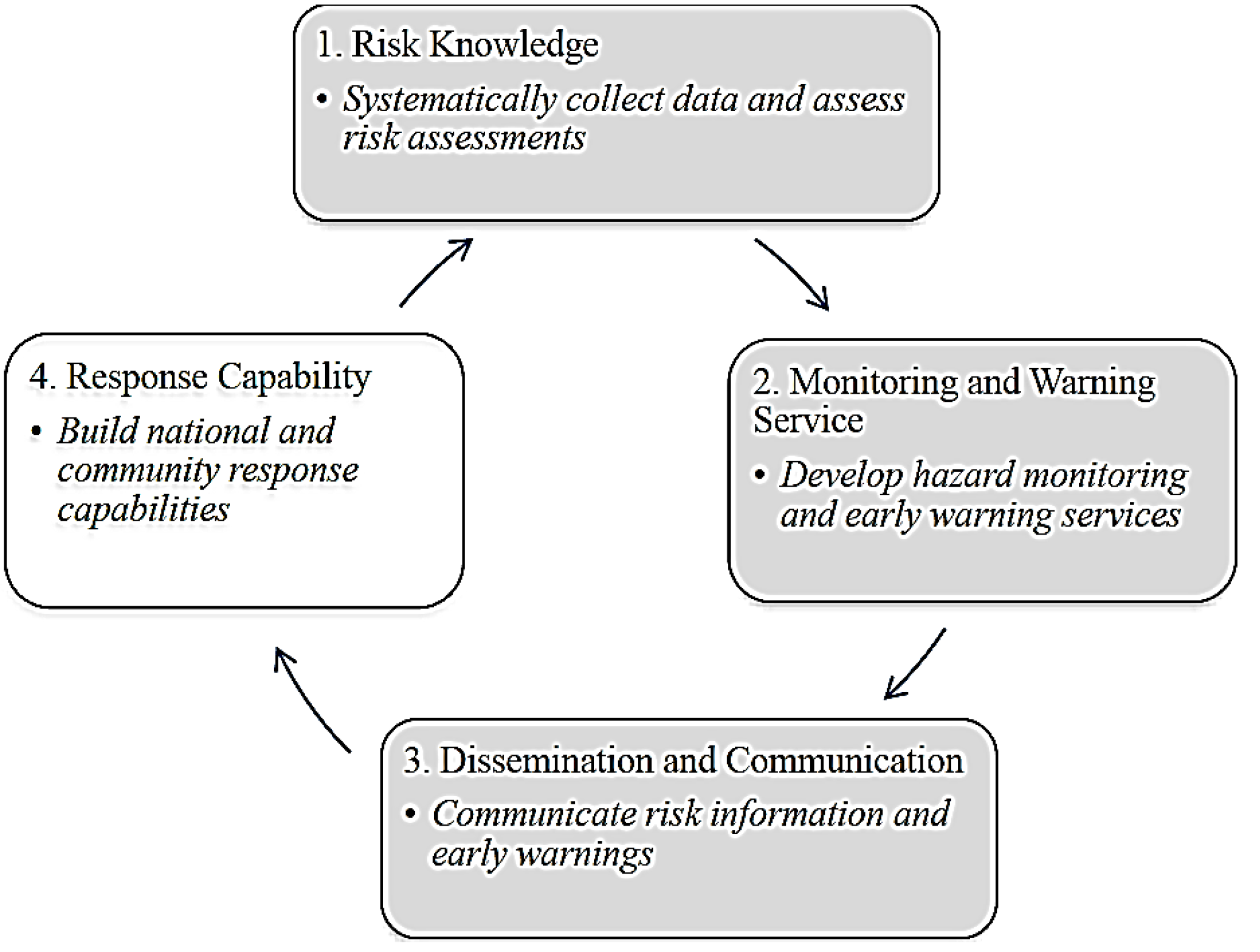

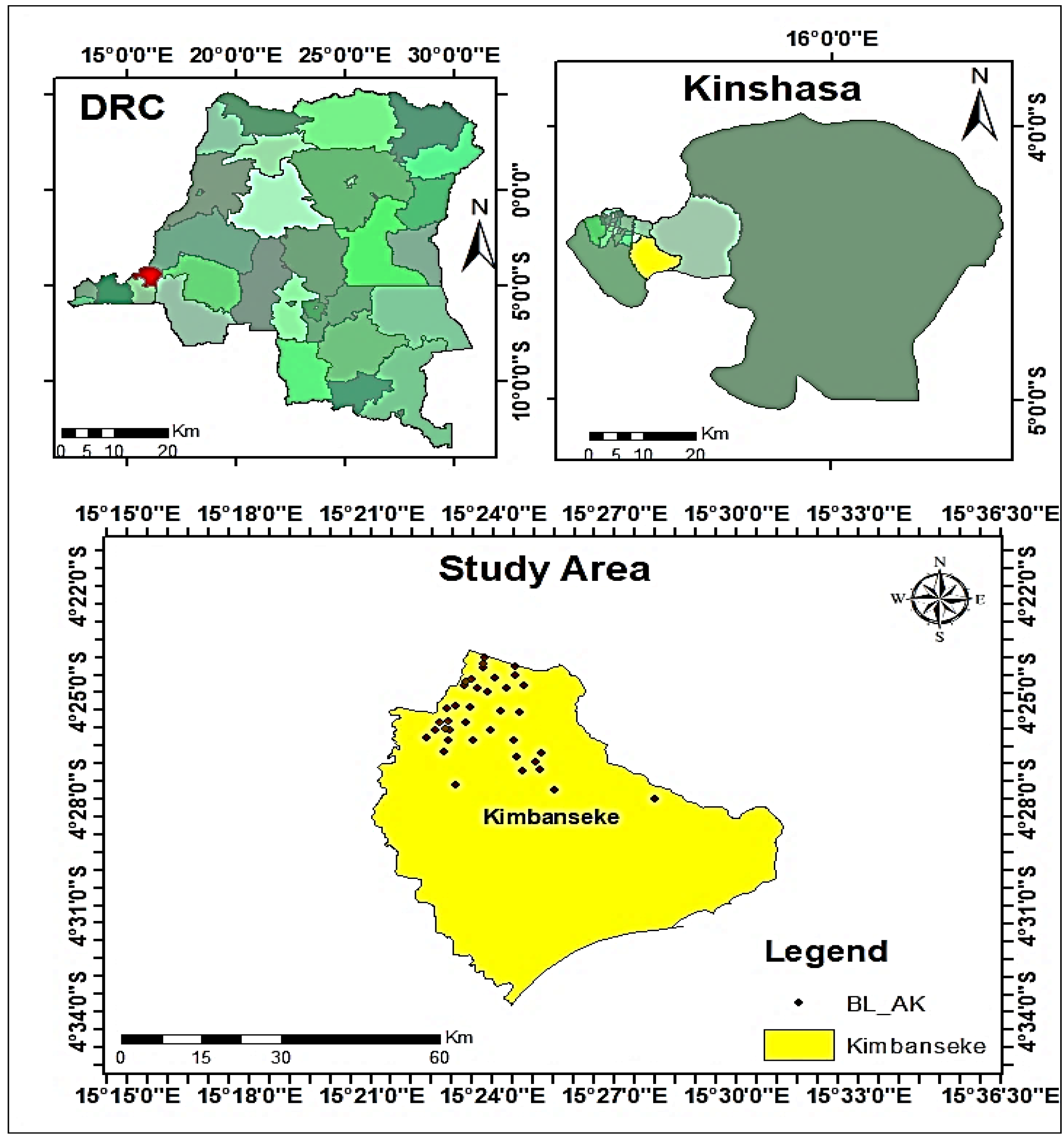

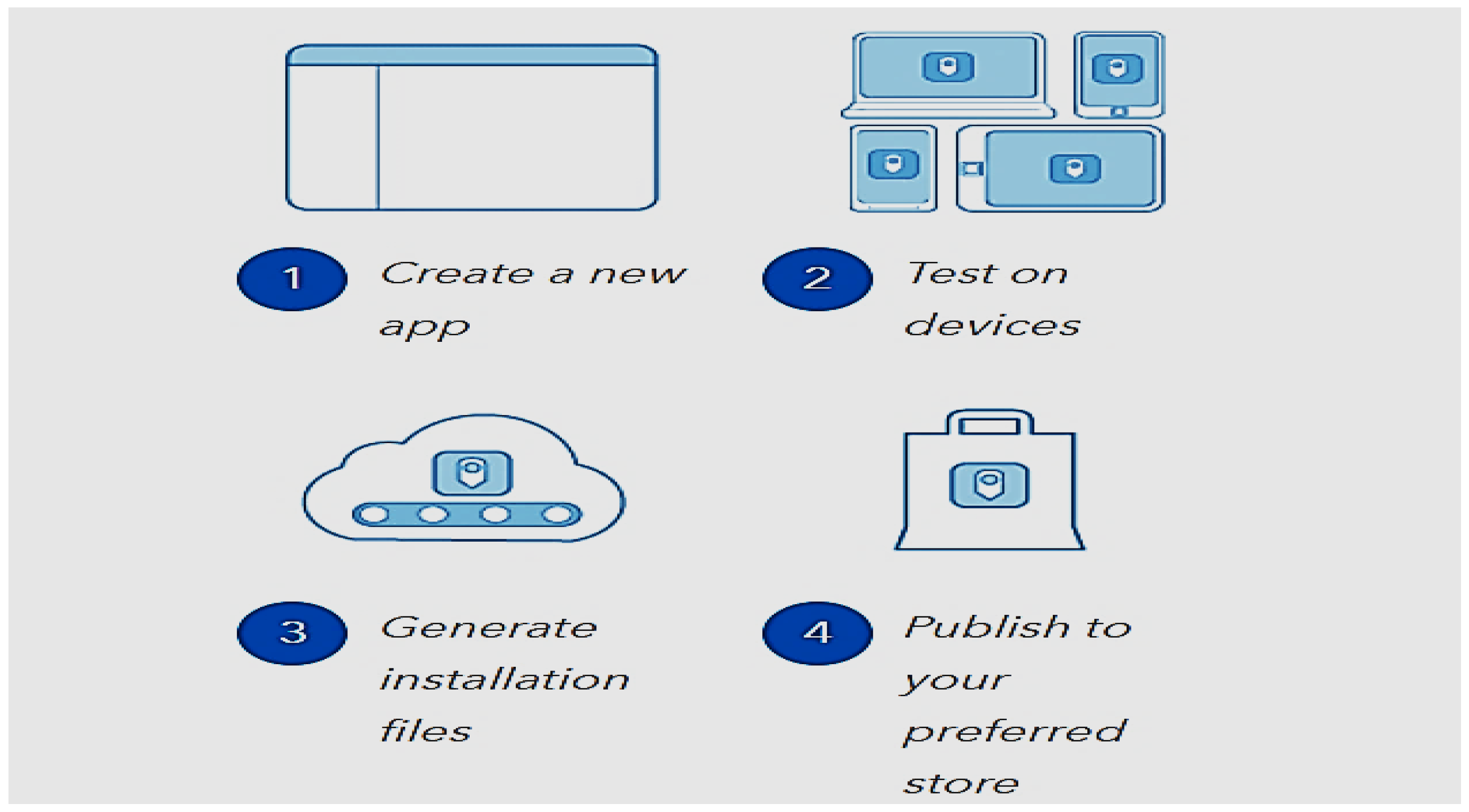
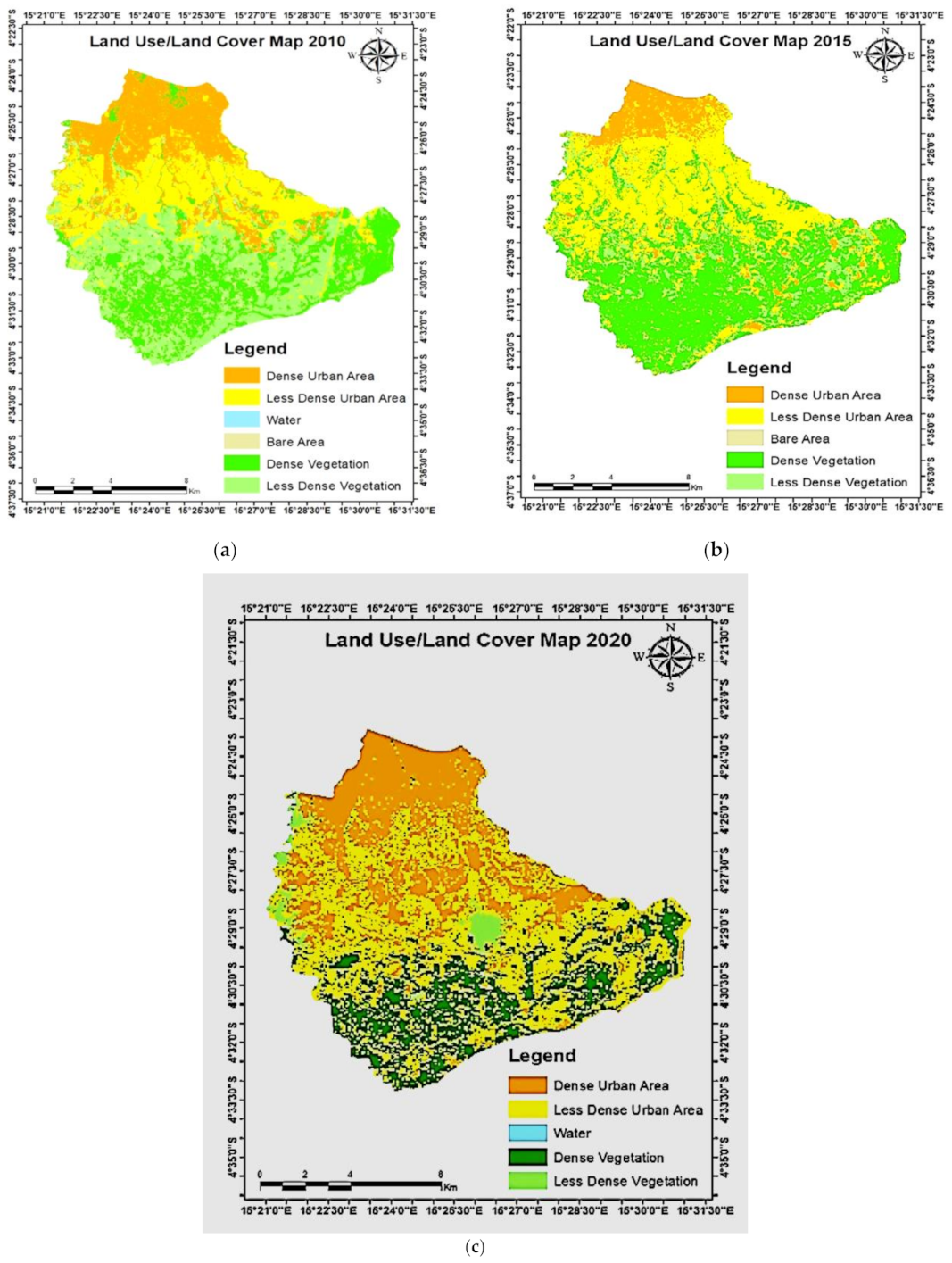

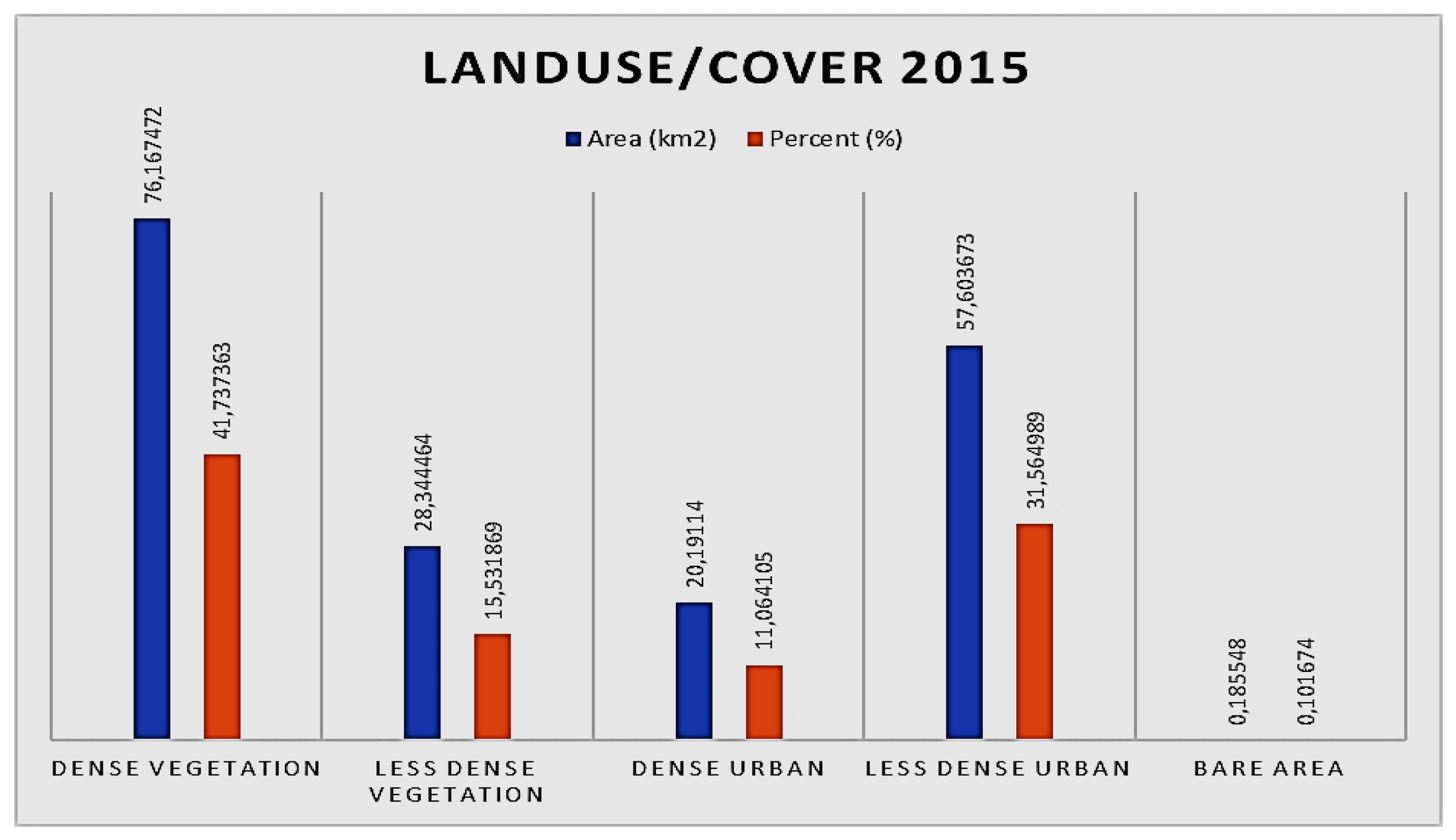


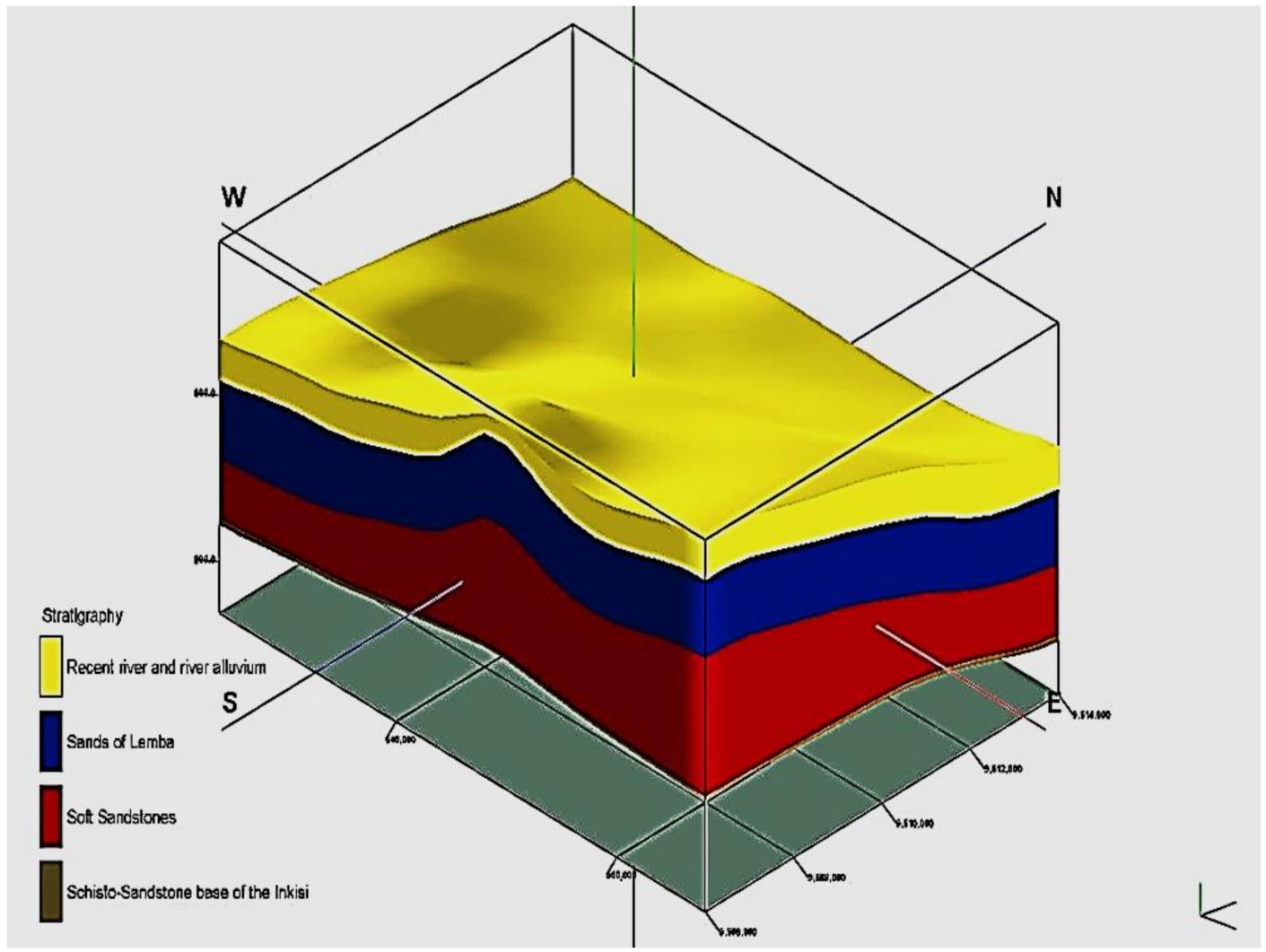

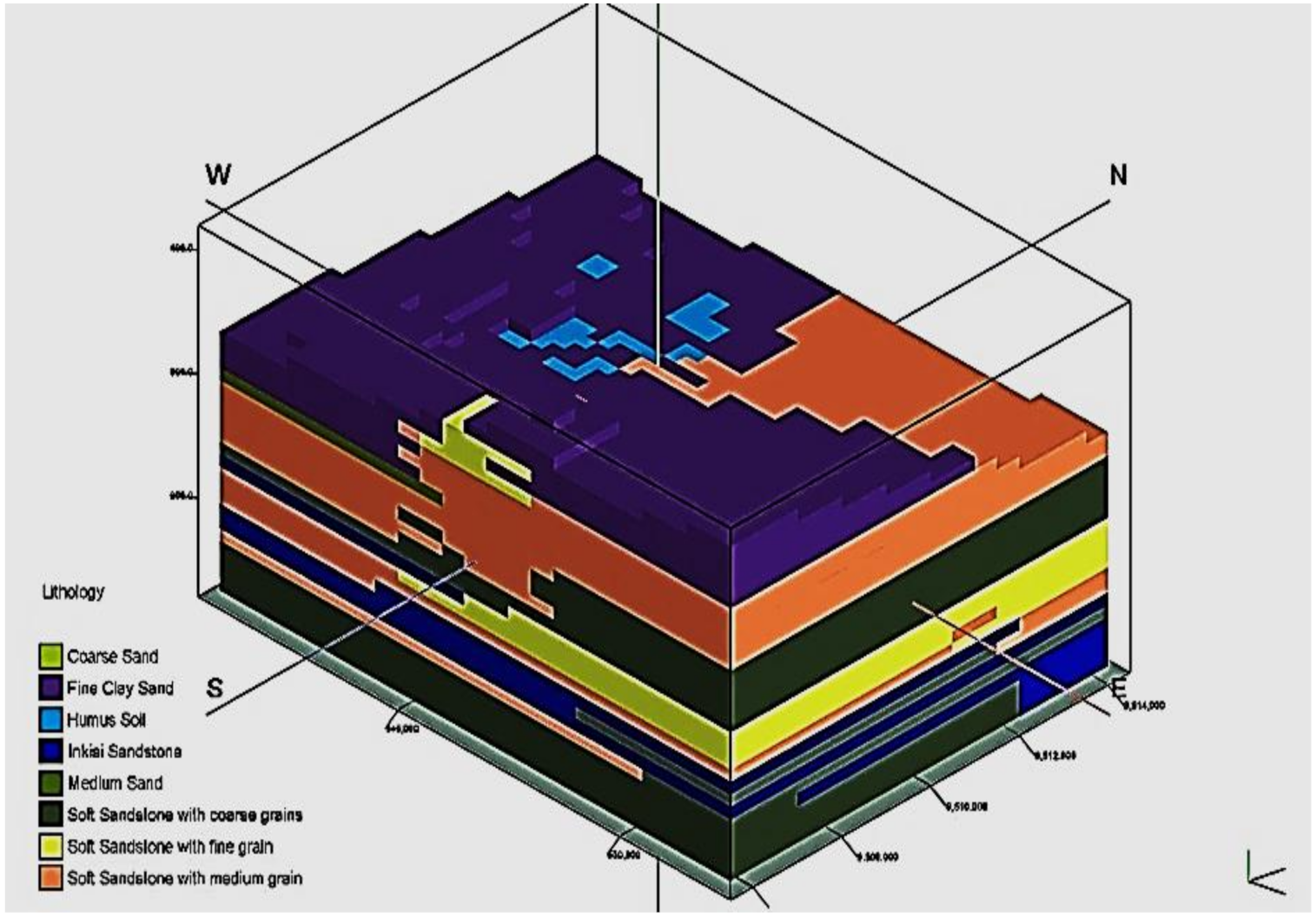
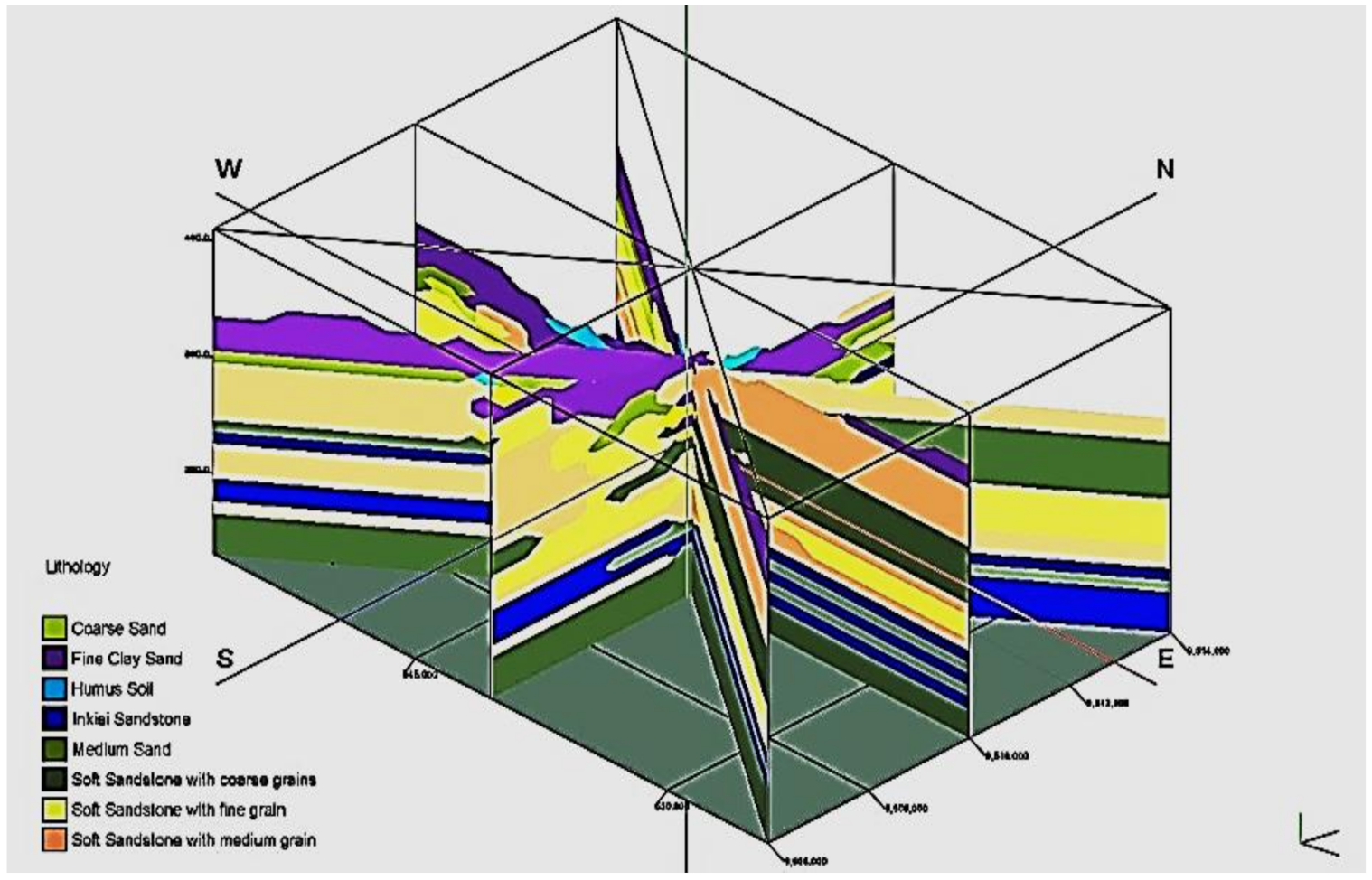




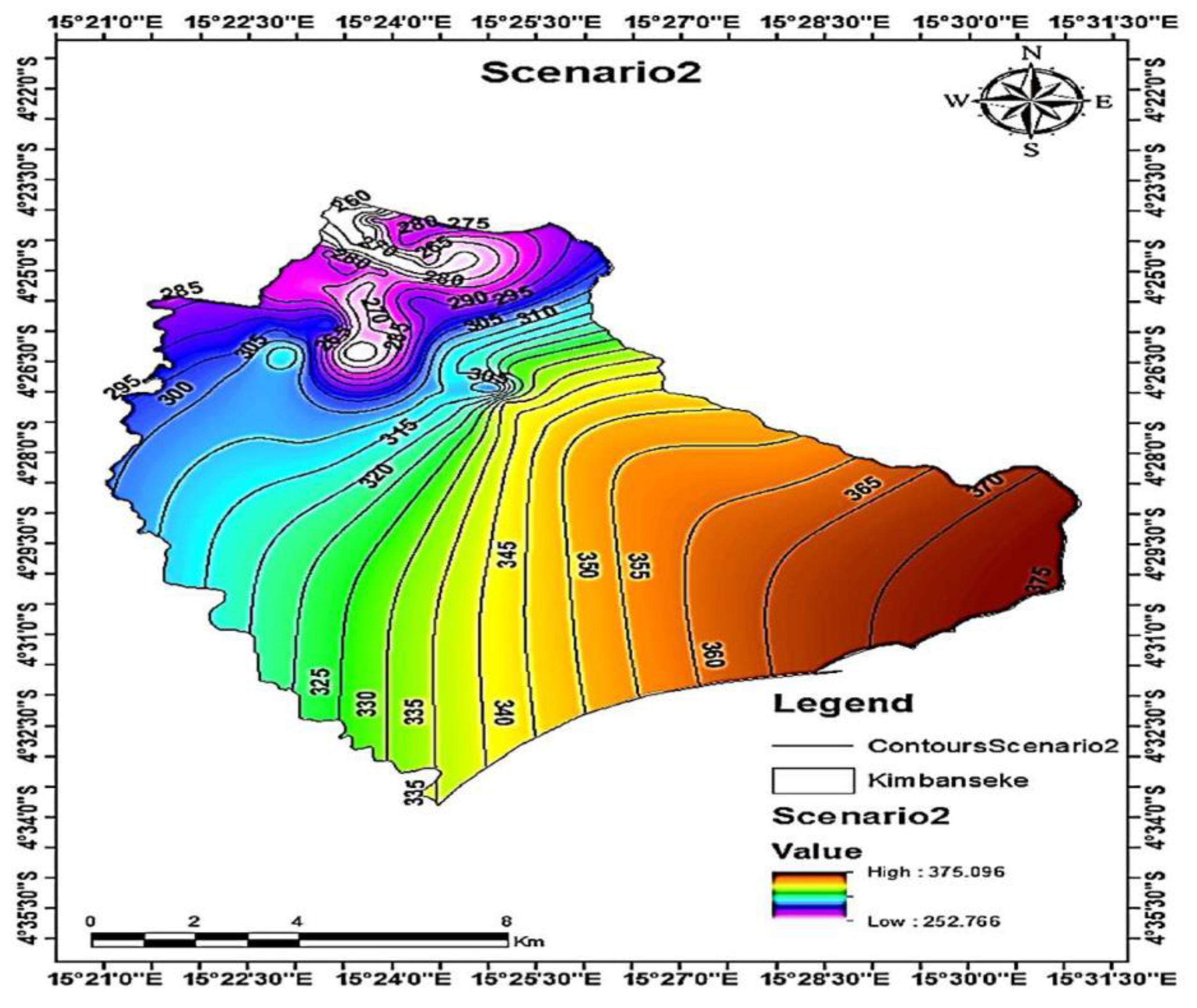
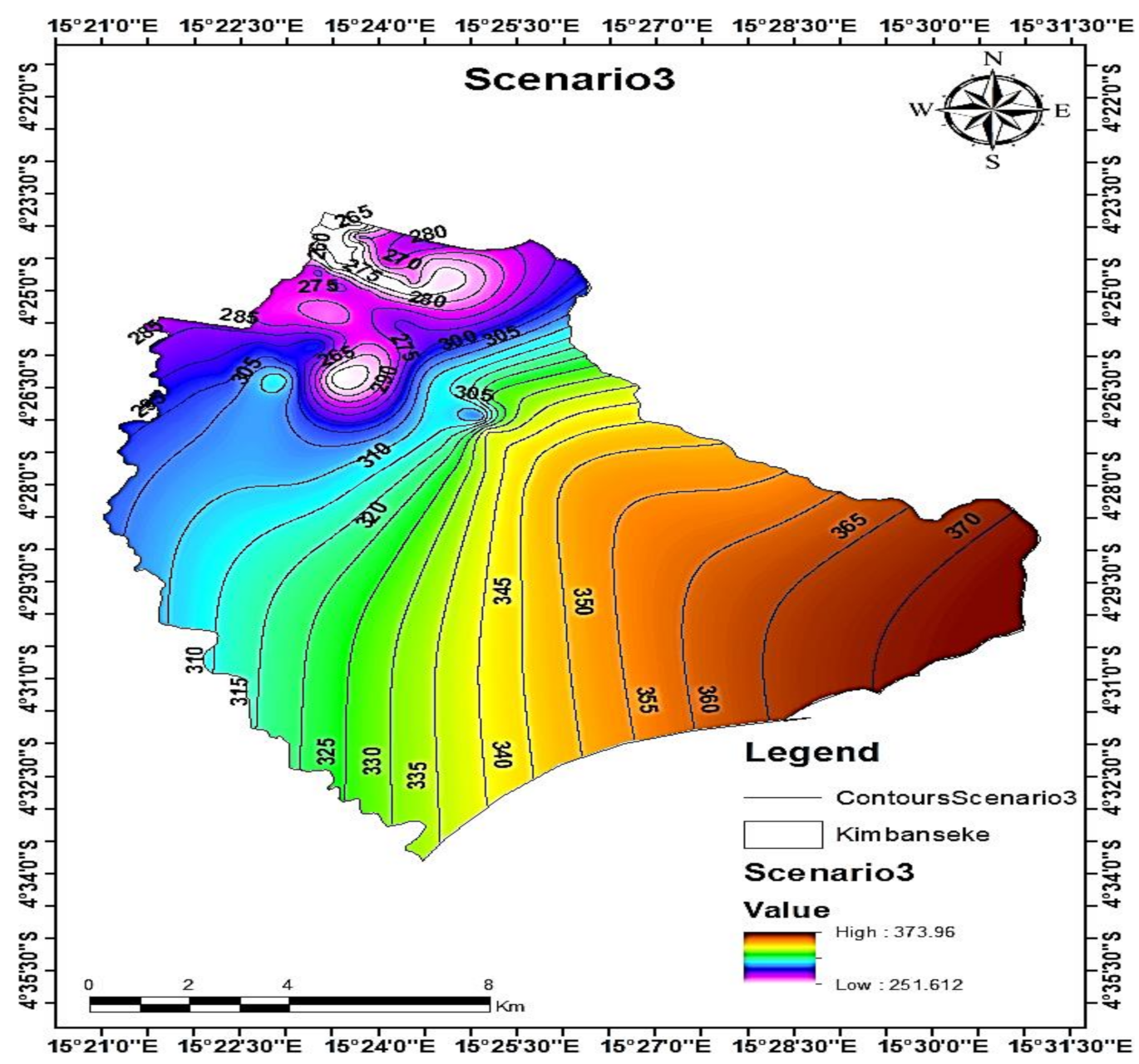



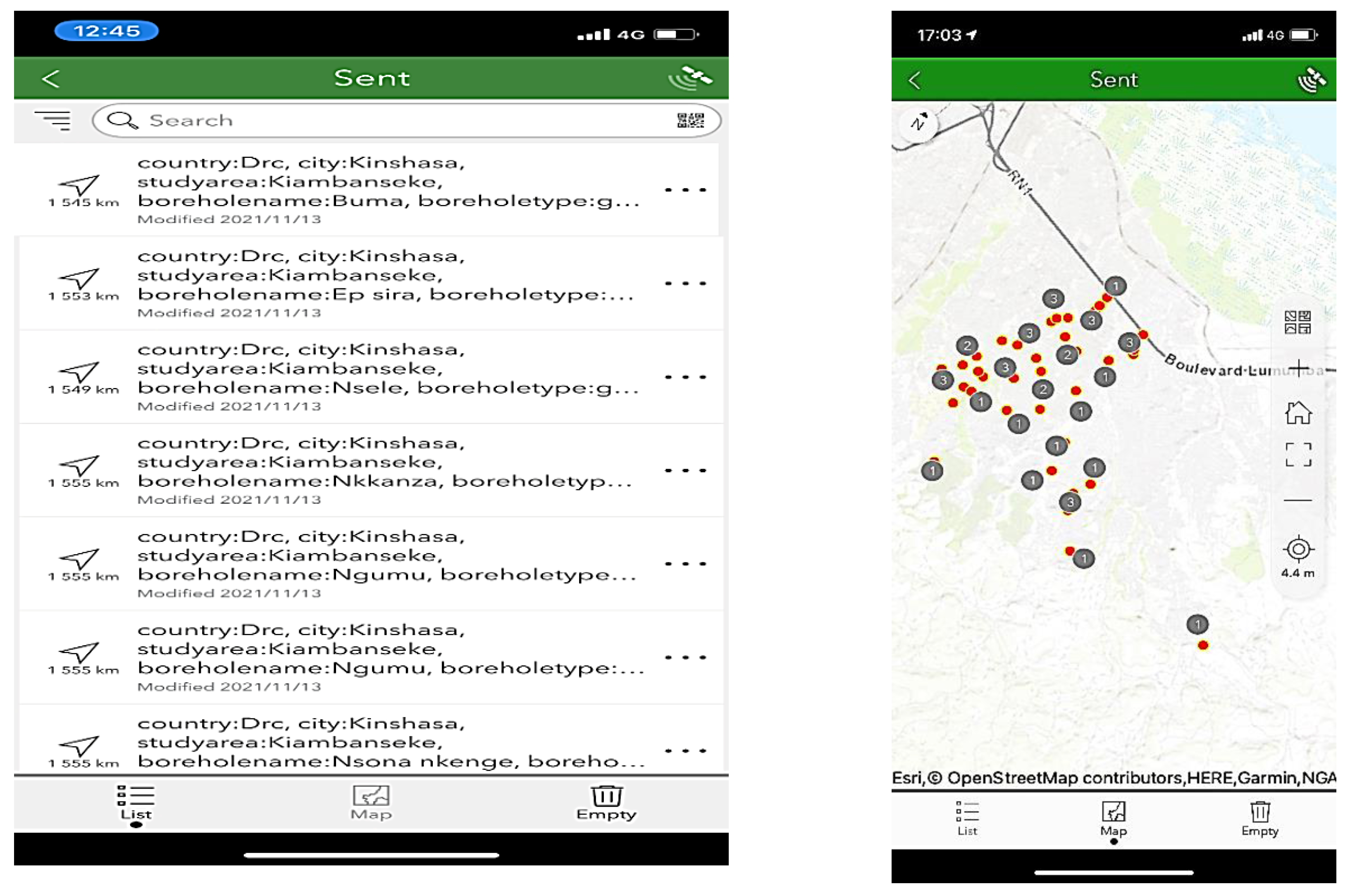
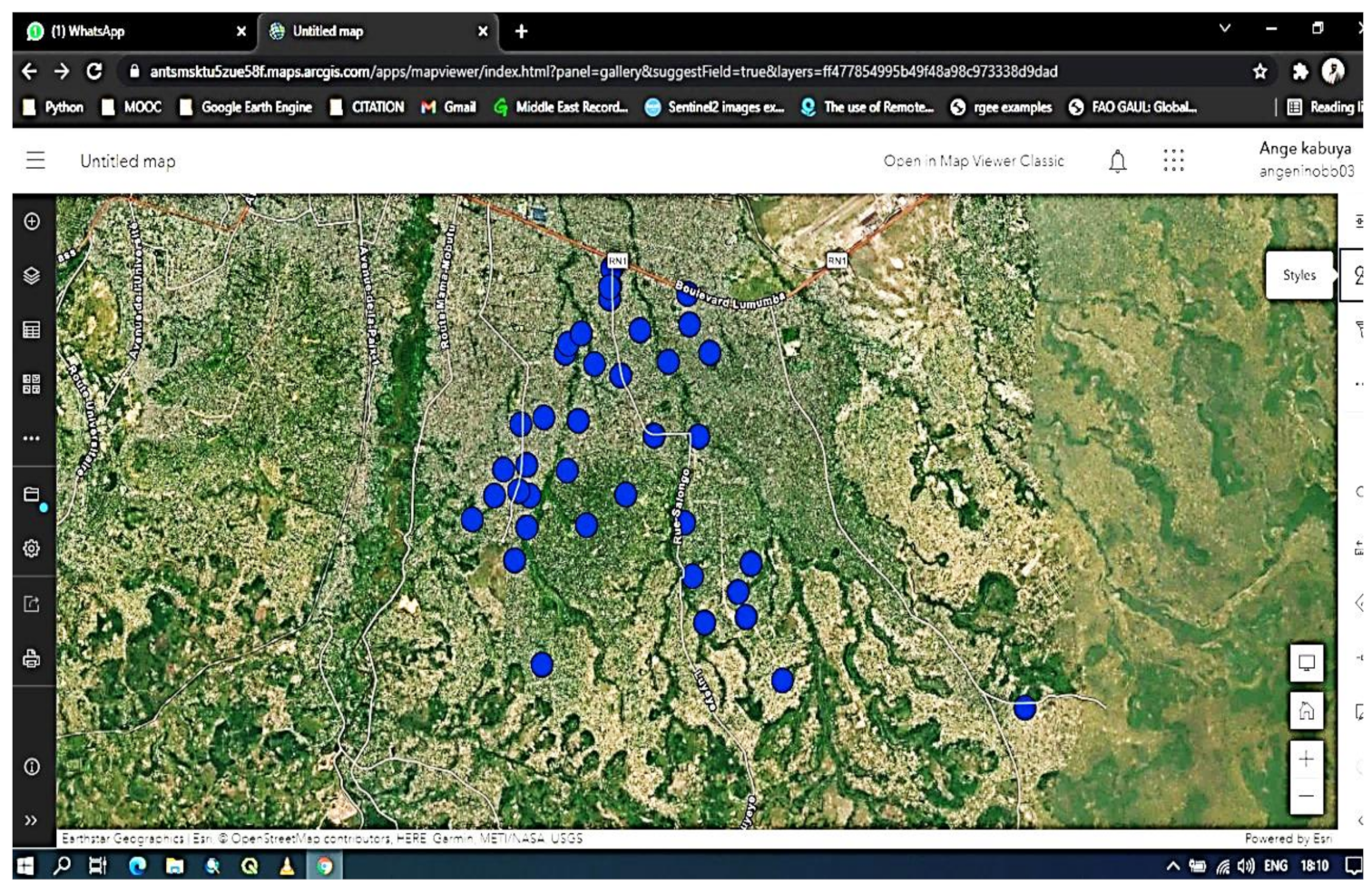
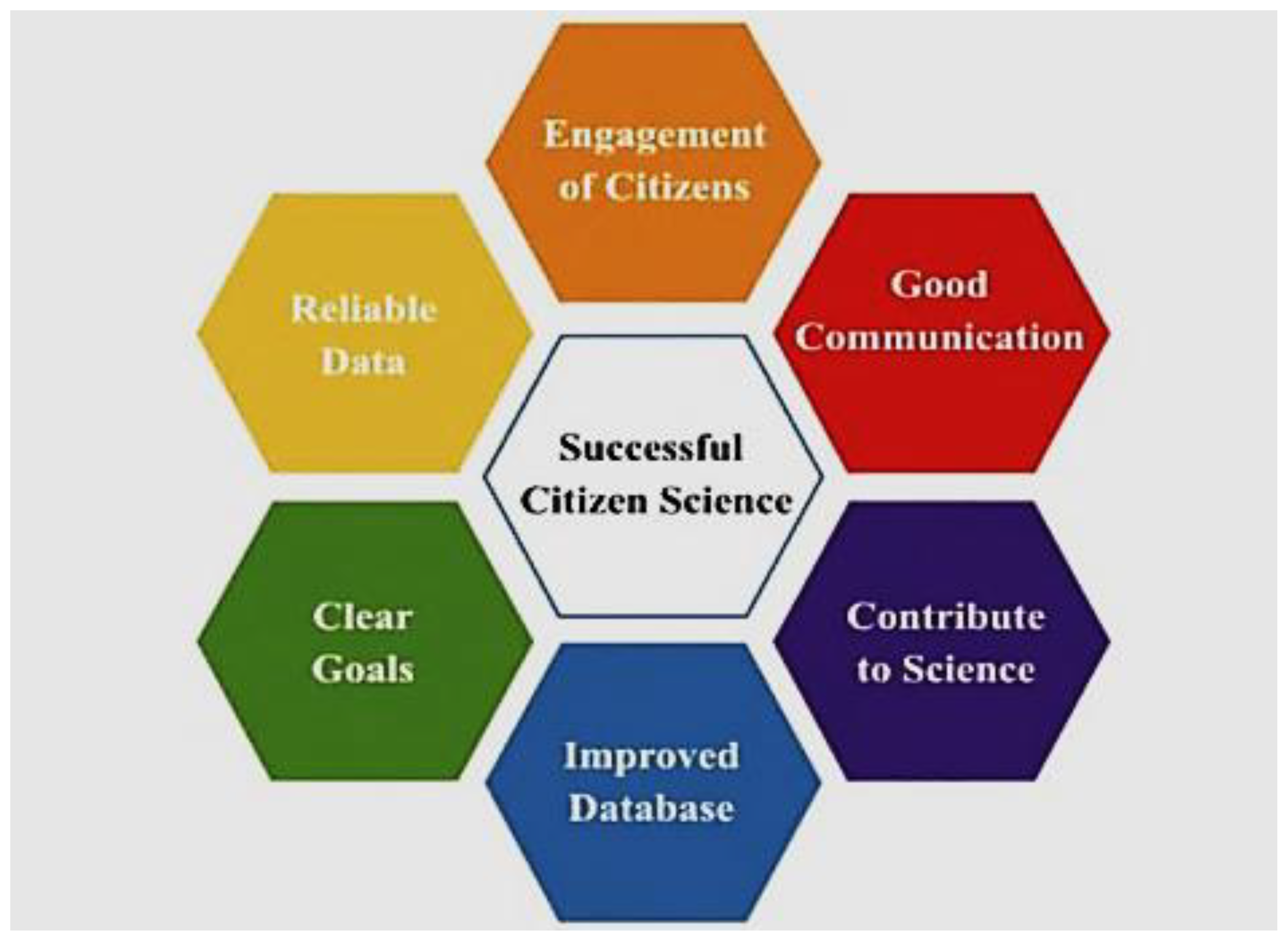
| Feature | Development on Demand | Off the Shelf Solution |
|---|---|---|
| Cost and time | In general, it costs more and takes longer to develop. | Cheaper than developing new software, but at the expense of functionality. |
| Maintenance | If source code is accessible, it can be done by the developer or a third party. | Maintenance is usually handled by the seller and is included in the licensing fee. |
| Solution maturity | New software is put through its trials and teething issues are usual with new development. | Generally speaking, a stable solution that has matured through time. |
| Operating system compatibility | As target devices’ operating systems evolve, the developer or a third party must maintain compatibility; this could also be part of product maintenance and upgrades. | From the standpoint of a commercial product, this will be a component of the product life-cycle and will most likely be included in the maintenance. |
| Type | Land Use/Land Cover for Period 2010, 2015 and 2020 | |||||
|---|---|---|---|---|---|---|
| 2010 | 2015 | 2020 | ||||
| Area (km2) | (%) | Area (km2) | (%) | Area (km2) | (%) | |
| Water | 0.000319 | 0.000173 | 0.144825 | 0.079359 | ||
| Dense Vegetation | 47.501656 | 25.726714 | 76.16747 | 41.737364 | 39.534915 | 21.663795 |
| Less Dense Vegetation | 46.172634 | 25.006921 | 28.34446 | 15.531867 | 6.764403 | 3.706664 |
| Dense Urban | 41.34654 | 22.393127 | 20.19114 | 11.064106 | 60.012977 | 32.885080 |
| Less Dense Urban | 34.084641 | 18.460111 | 57.60367 | 31.564989 | 76.035903 | 41.665101 |
| Bare Area | 15.53363 | 8.412954 | 0.185548 | 0.101674 | ||
| Year | Domestic | Agriculture | Industry | Total |
|---|---|---|---|---|
| 1990 | 80.8 | 70 | 34.9 | 185.7 |
| 2000 | 186 | 112 | 58 | 356 |
| 2025 | 874 | 420 | 130.5 | 1424.5 |
| Scenario | Percentage (%) | Minimum (m) | Maximum (m) | Mean (m) | Standard Deviation, SDV (m) |
|---|---|---|---|---|---|
| Baseline (0) | 0 | 253.925 | 376.227 | 315.076 | 0 |
| 1 | 15 | 253.359 | 375.657 | 314.508 | 0.57 |
| 2 | 30 | 252.766 | 375.096 | 313.931 | 1.131 |
| 3 | 60 | 252.766 | 375.096 | 313.931 | 2.267 |
Publisher’s Note: MDPI stays neutral with regard to jurisdictional claims in published maps and institutional affiliations. |
© 2022 by the authors. Licensee MDPI, Basel, Switzerland. This article is an open access article distributed under the terms and conditions of the Creative Commons Attribution (CC BY) license (https://creativecommons.org/licenses/by/4.0/).
Share and Cite
Kabuya, A.K.; Alowo, R.; Nkhonjera, G.K. Apps for Smart Groundwater Monitoring and Assessments: A Case Study of Regideso Catchment in Kimbanseke. Appl. Sci. 2022, 12, 3243. https://doi.org/10.3390/app12073243
Kabuya AK, Alowo R, Nkhonjera GK. Apps for Smart Groundwater Monitoring and Assessments: A Case Study of Regideso Catchment in Kimbanseke. Applied Sciences. 2022; 12(7):3243. https://doi.org/10.3390/app12073243
Chicago/Turabian StyleKabuya, Ange Kalala, Rebecca Alowo, and German K. Nkhonjera. 2022. "Apps for Smart Groundwater Monitoring and Assessments: A Case Study of Regideso Catchment in Kimbanseke" Applied Sciences 12, no. 7: 3243. https://doi.org/10.3390/app12073243







